Alternate name Hierakonpolis | Local time Thursday 6:04 PM | |
 | ||
Weather 27°C, Wind NW at 13 km/h, 24% Humidity | ||
Nekhen entering the gate of the western horizon
Nekhen /ˈnɛkən/ or Hierakonpolis (/ˌhaɪərəˈkɒnpəlᵻs/; Ancient Greek: Ἱεράκων πόλις Hierakōn polis "Hawk City", Egyptian Arabic: الكوم الأحمر el-Kōm el-Aḥmar "the Red Mound") was the religious and political capital of Upper Egypt at the end of prehistoric Egypt (c. 3200–3100 BC) and probably also during the Early Dynastic Period (c. 3100–2686 BC). Some authors suggest occupation dates that should begin thousands of years earlier.
Contents
- Nekhen entering the gate of the western horizon
- Egypt 288 nekhen hierakonpolis kom el ahmar by egyptahotep
- Horus cult center
- Fort
- Oldest known Egyptian painted tomb
- Oldest known zoo
- Later activity
- References
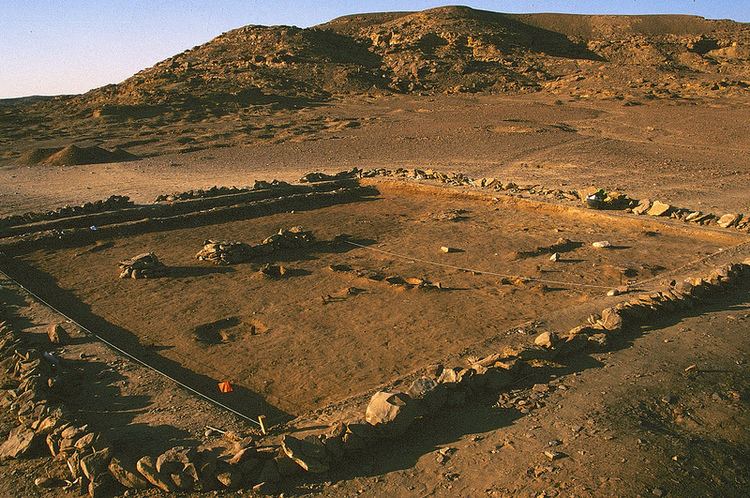
Egypt 288 nekhen hierakonpolis kom el ahmar by egyptahotep
Horus cult center
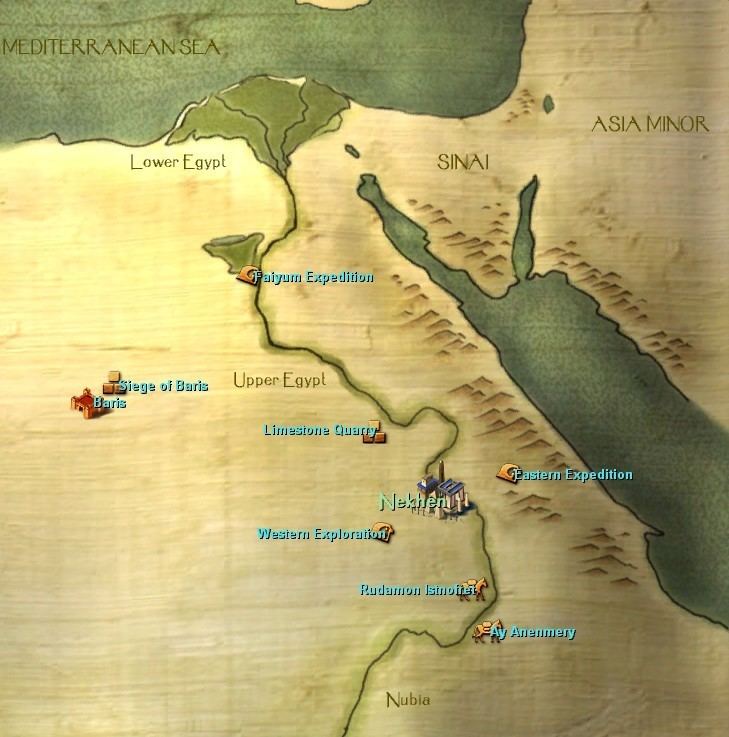
Nekhen was the center of the cult of a hawk deity, Horus of Nekhen, which raised in this city one of the most ancient Egyptian temples. It retained its importance as the cultic center for this divine patron of the kings long after the site had otherwise declined.
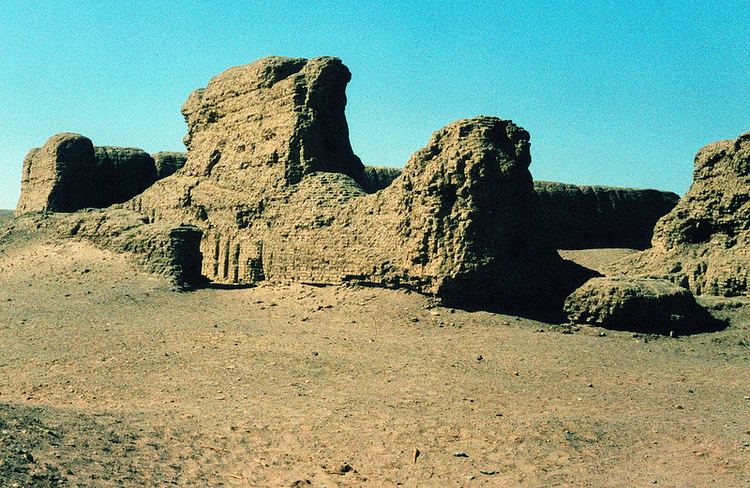
The first settlement at Nekhen dates from either the predynastic Amratian culture (circa 4400 BC) or perhaps during the late Badari culture (circa 5000 BC). At its height from about 3400 BC, Nekhen had at least 5000 and possibly as many as 10,000 inhabitants.

The ruins of the city originally were excavated toward the end of the nineteenth century by the English archaeologists James Quibell and Frederick W. Green.
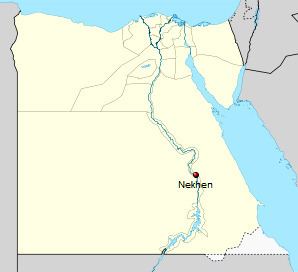
Quibell and Green discovered the Main Deposit, a foundation deposit beneath the temple, in 1894. Quibell was originally trained under Flinders Petrie, the father of modern Egyptology. However, he failed to follow Petrie's methods and the temple was a difficult site to excavate to begin with, so his excavation was poorly conducted and poorly documented. Specifically, the situational context of the items therein is poorly recorded and often the reports of Quibell and Green are in contradiction.

The most famous artifact commonly associated with the main deposit, the Narmer Palette, is now thought to have probably not been in the main deposit at all. Quibell's report made in 1900 put the palette in the deposit, but Green's report in 1902 put it about one to two yards away. Green's version is substantiated by earlier field notes (Quibell kept none), so it is now the accepted record of events.
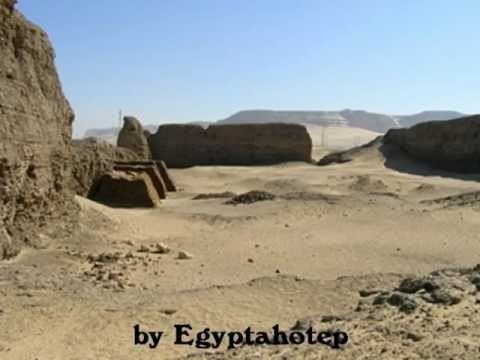
The main deposit dates to the early Old Kingdom, but the artistic style of the objects in the deposit indicate that they were from Naqada III and were moved into the deposit at a later date. The other important item in the deposit clearly dates to the late prehistoric. This object, the Scorpion Macehead, depicts a king known only by the ideogram for scorpion, now called Scorpion II, participating in what seems to be a ritual irrigation ceremony. Although the Narmer Palette is more famous because it shows the first king to wear both the crowns of Upper and Lower Egypt, the Scorpion Macehead also indicates some early military hostility with the north by showing dead lapwings, the symbol of Lower Egypt, hung from standards.
More recently, the concession was excavated further by a multinational team of archaeologists, Egyptologists, geologists, and members of other sciences, which was coordinated by Michael Hoffman until his death in 1990, then by Barbara Adams of University College London and Dr. Renee Friedman representing the University of California, Berkeley and the British Museum until Barbara Adams's death in 2001, and by Renée Friedman thereafter.
"Fort"
The structure at Nekhen with the misnomer "fort" is a massive mud-brick enclosure built by Pharaoh Khasekhemwy of the Second Dynasty. It appears to be similar in structure and purpose as the 'forts' constructed at Abydos, and has no apparent military function. The true function of these structures is unknown, but they seem to be related to the rituals of kingship and the culture.
The ritual structure was built on a prehistoric cemetery. The excavations there, as well as the work of later brick robbers, have seriously undermined the walls and led to the near collapse of the structure. For two years, during 2005 and 2006, the team led by Friedman was attempting to stabilize the existing structure and support the endangered areas of the structure with new mudbricks.
Oldest known Egyptian painted tomb
Other discoveries at Nekhen include Tomb 100, the oldest tomb with painted decoration on its plaster walls. The sepulchre is thought to date to the Gerzeh culture (ca. 3500-3200 BC).
The decoration shows presumed religious scenes and images that include figures featured in Egyptian culture for three thousand years—a funerary procession of barques, possibly a goddess standing between two upright lionesses, a wheel of various horned quadrupeds, several examples of a staff that became associated with the deity of the earliest cattle culture and one being held up by a heavy-breasted goddess, onagers or zebras, ibexes, ostriches, lionesses, impalas, gazelles, and cattle.
Oldest known zoo
The oldest known zoological collection was revealed during excavations at Nekhen in 2009 of a menagerie that dates to ca. 3500 BC. The exotic animals included hippopotami, hartebeest, elephants, baboons and wildcats.
Later activity
There are some later tombs at Nekhen, dating to the Middle Kingdom, Second Intermediate Period and New Kingdom. In the tomb of Horemkhauef was found a biographical inscription reporting Horemkhauef's journey to the capital. Because it had a strong association with Egyptians' religious ideas about kingship, the temple of Horus at Nekhen was used as late as the Ptolemaic Kingdom.
